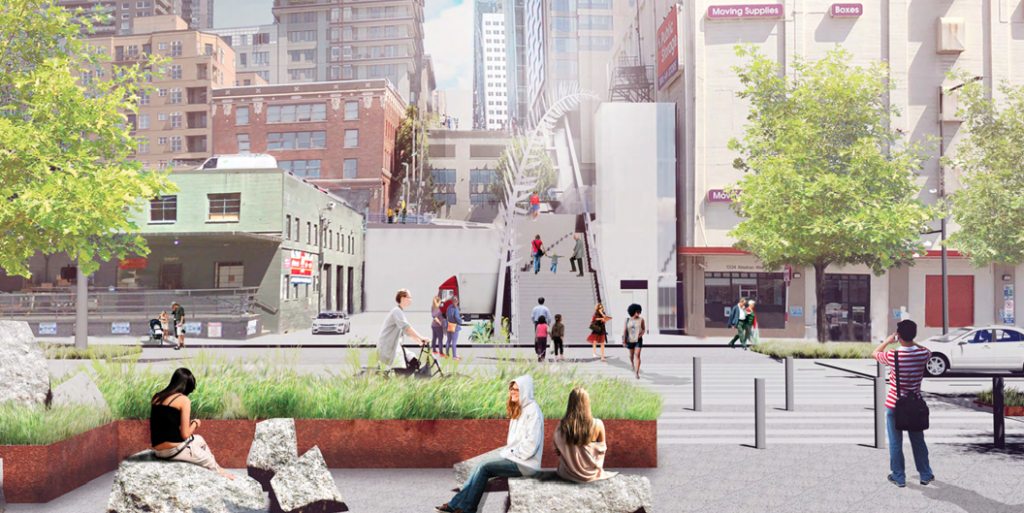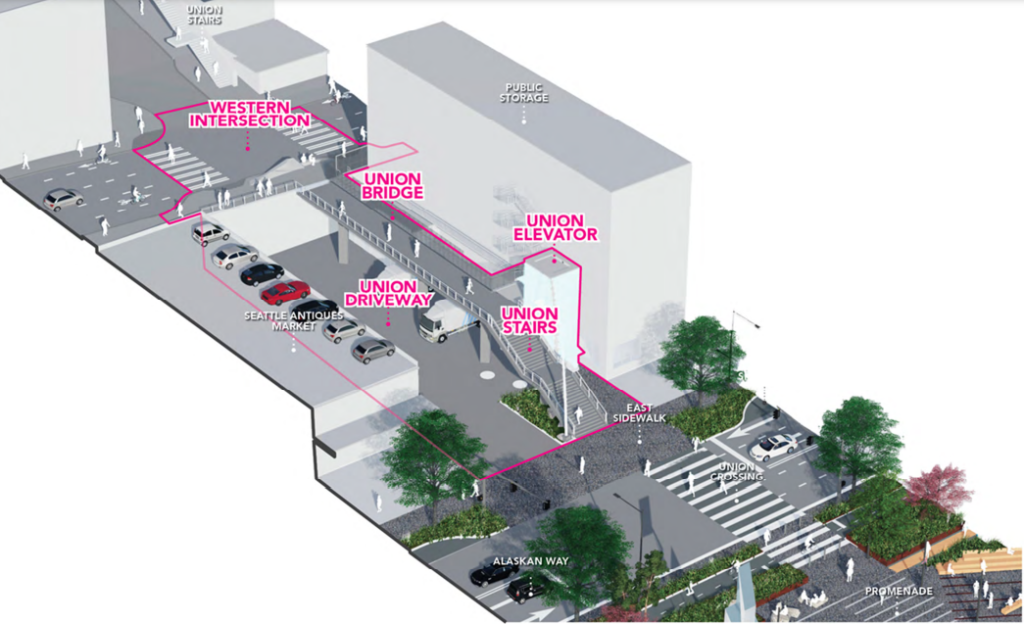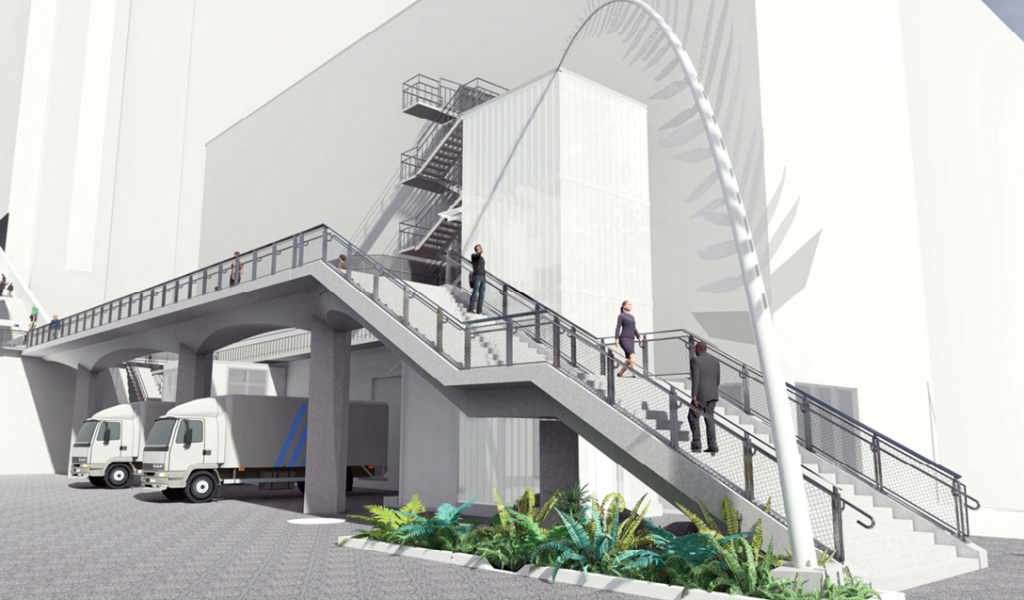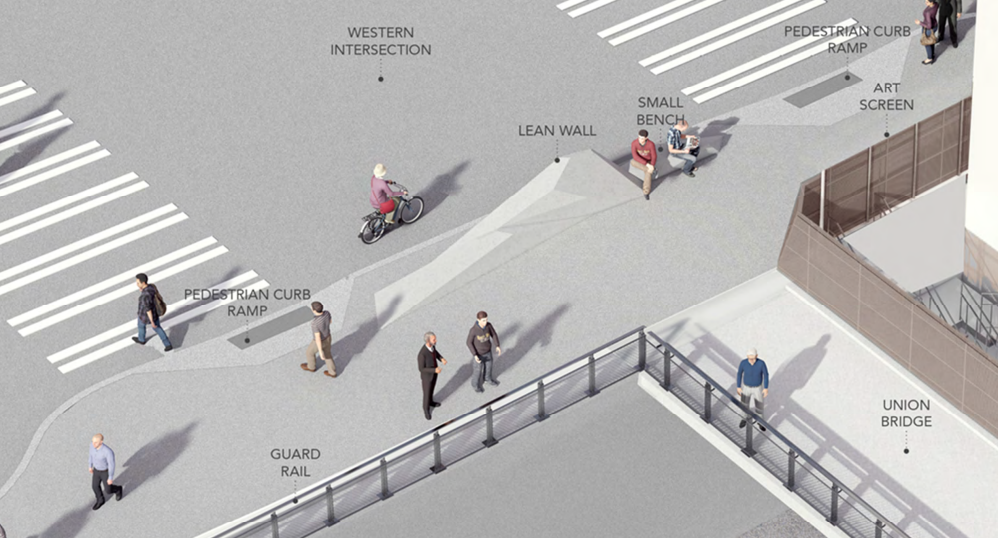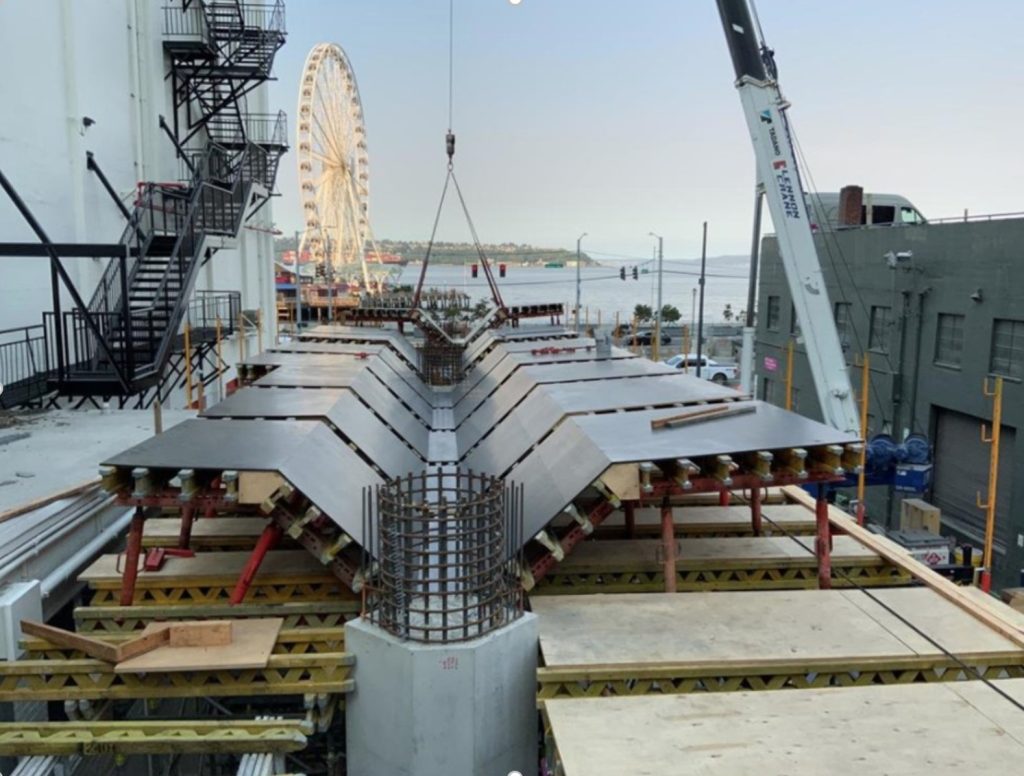
The overhaul of the Seattle Waterfront, while not exactly close to completely wrapping up, is starting to take shape before our eyes. With work crews having completed one-half of the southern portion of the new Alaskan Way highway, which will be nine lanes south of Columbia Street, stopping by the waterfront now gives you a sense of what the finished project will look like. Other projects planned with the roadway and pedestrian promenade are moving forward as well. Two pedestrian bridges, one of which is already under construction, should improve access around the new highway.
Marion Street
The more significant of these new pedestrian bridges will be the new Marion Street bridge connecting to the new Washington State Ferries terminal at Colman Dock. Currently there is a temporary pedestrian bridge over Alaskan Way at Columbia Street for ferry passengers, which connects to a remaining segment of the old pedestrian bridge at Marion and Western Avenue. The segment of bridge between 1st Avenue and Western will remain, with a new, wider bridge connecting directly between there and the new ferry terminal.
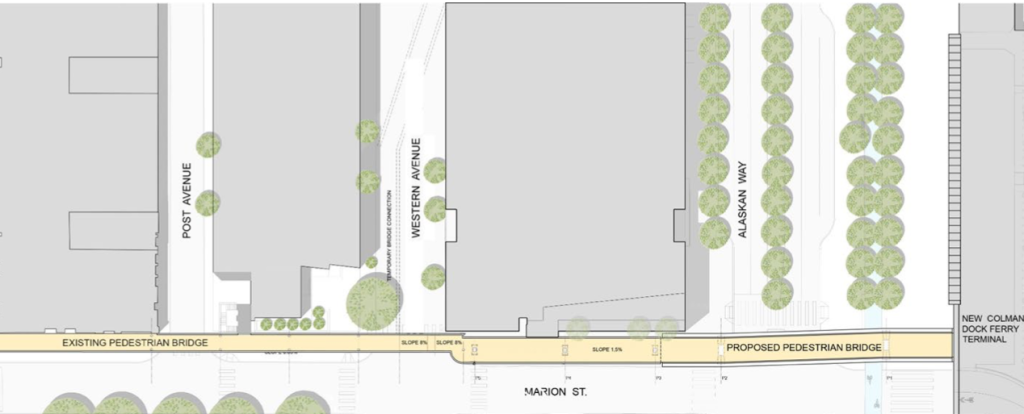
Past that pinch point of the existing bridge, the new structure will be 16 feet wide, compared to the less than the 11 feet width of the existing segment of the bridge closer to 1st Avenue. The bridge is ultimately envisioned as being completely replaced and widened, but that path to doing that remains opaque. The Seattle Design Commission, reviewing the project in early 2019, expressed concern about constructing the project in two phases, raising the possibility that the second phase would drop in priority once the first phase was completed. One commissioner even voted against approving the project because of that lack of clarity on when the second phase would be completed.
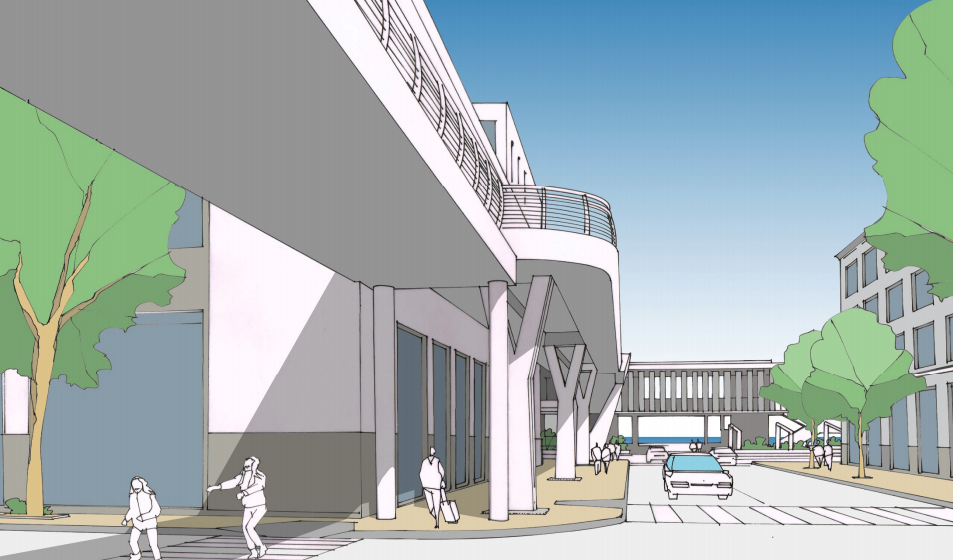
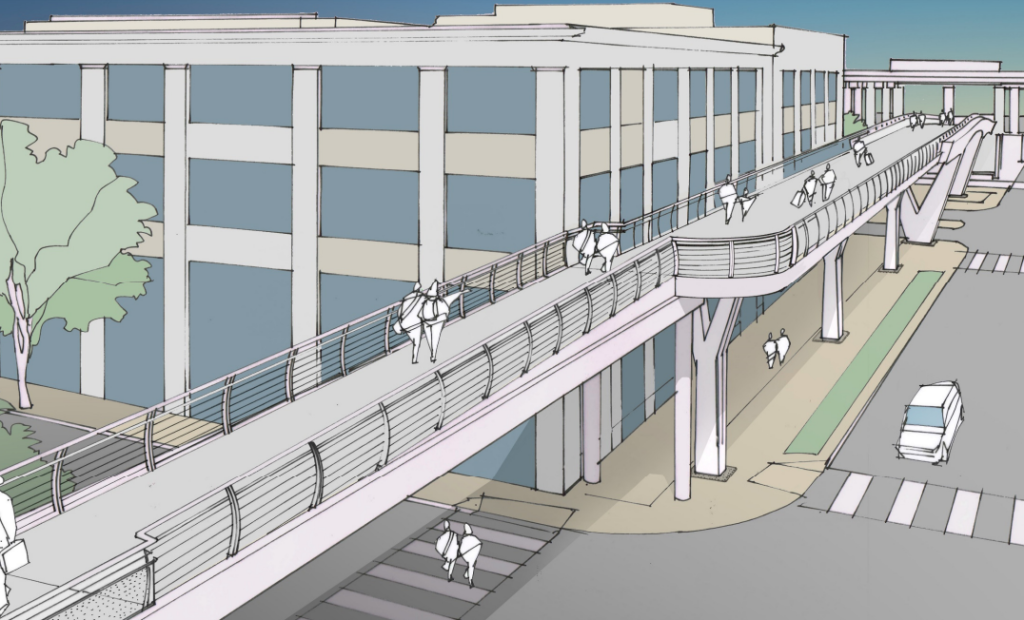
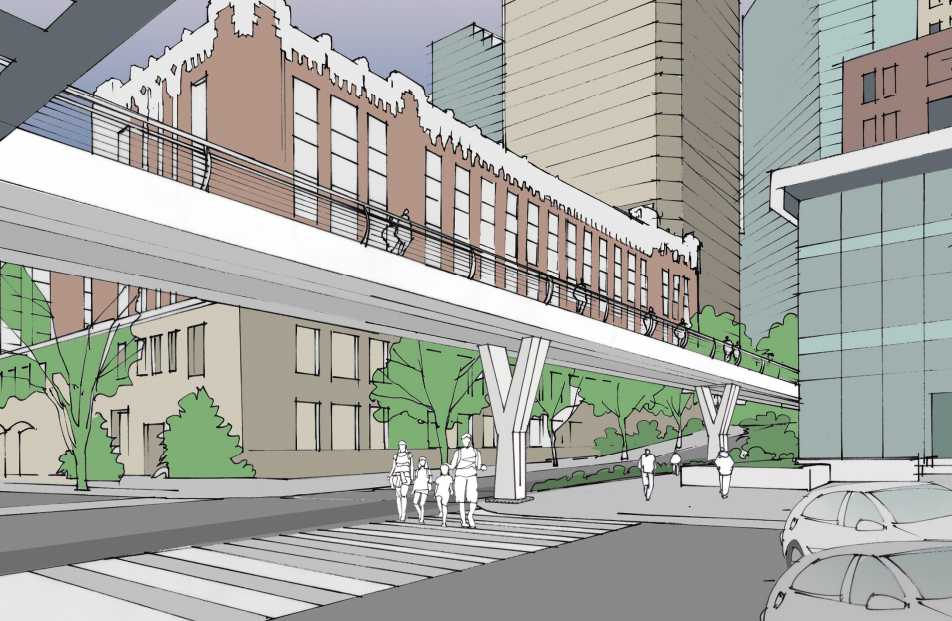
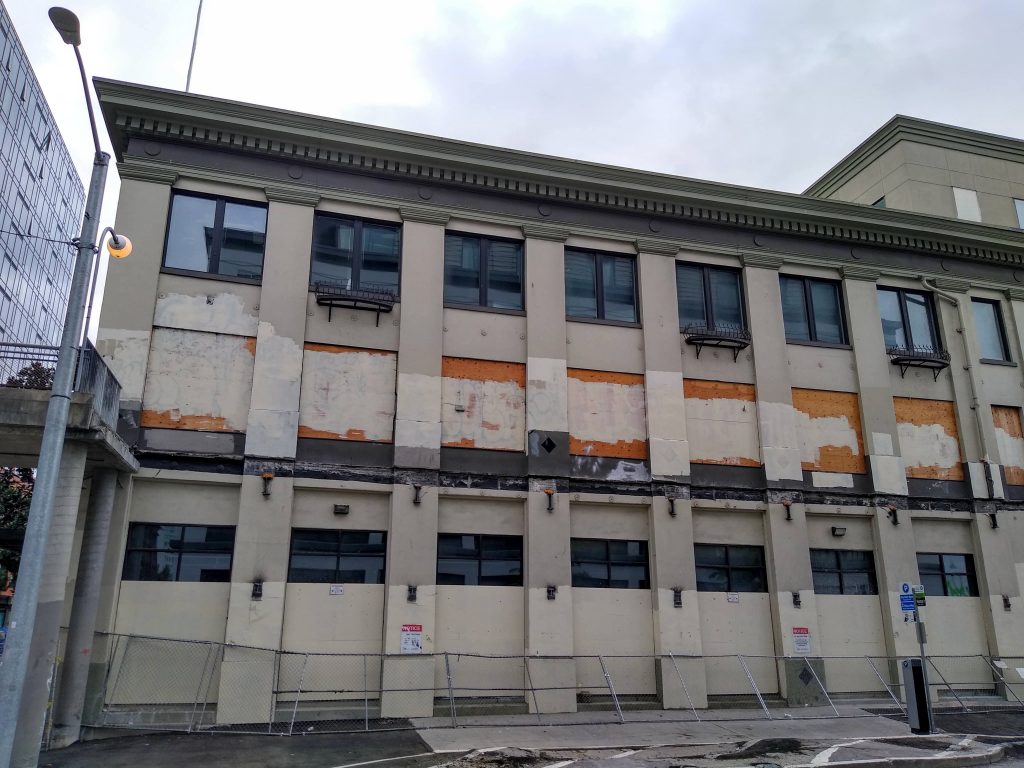
Once the new Colman Dock terminal is complete, in addition to direct access to the Bremerton and Bainbridge ferries, people walking will be able to use the pedestrian bridge from 1st Avenue to access the King County passenger ferry dock without having to exit out onto the Alaskan Way sidewalk. The new elevators at both the Alaskan Way passenger entrance and the connection to the King County facility could also make the Marion Street bridge a more popular option to people who prefer to walk their bikes from 1st Avenue to get on a ferry. Bike travelers to Bainbridge or Bremerton will still need to use the vehicle entrances located on Alaskan Way to access their ferry.
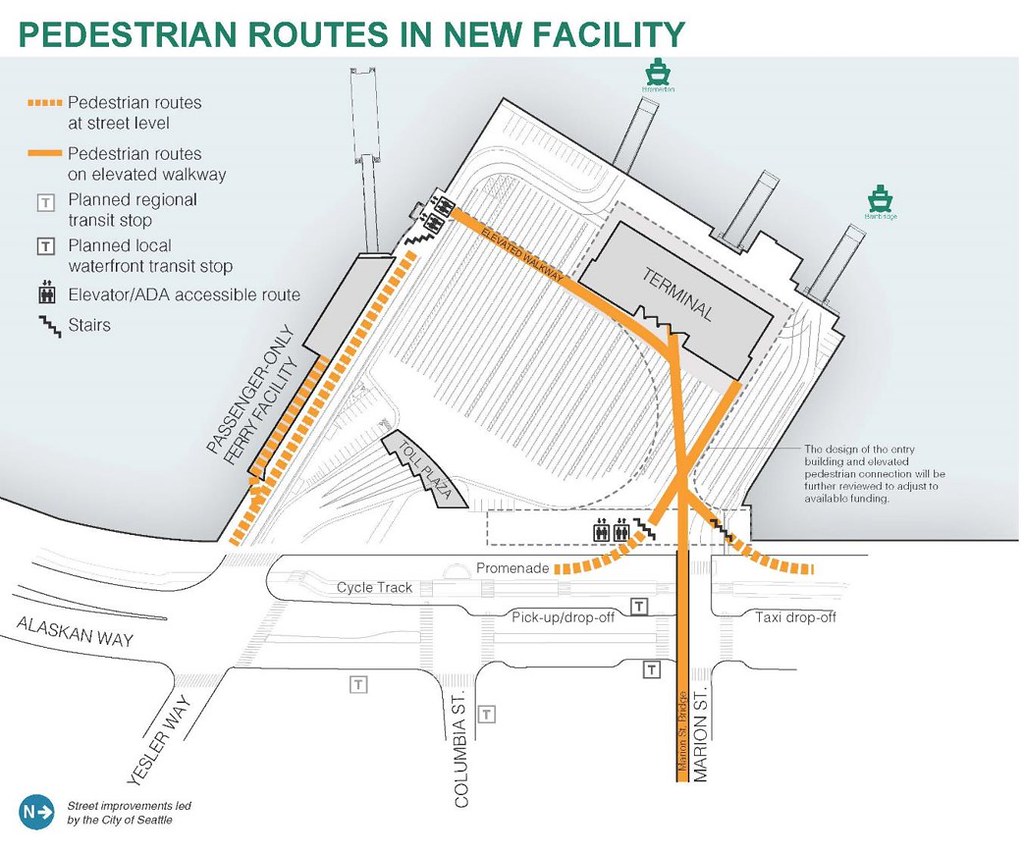
The temporary bridge over Columbia is lighted via overhead mounted lights, but the new bridge will be lighted with built-in fixtures. Spotlights will illuminate the v-shaped bridge columns, which should make them into a fairly iconic part of the new waterfront promenade.
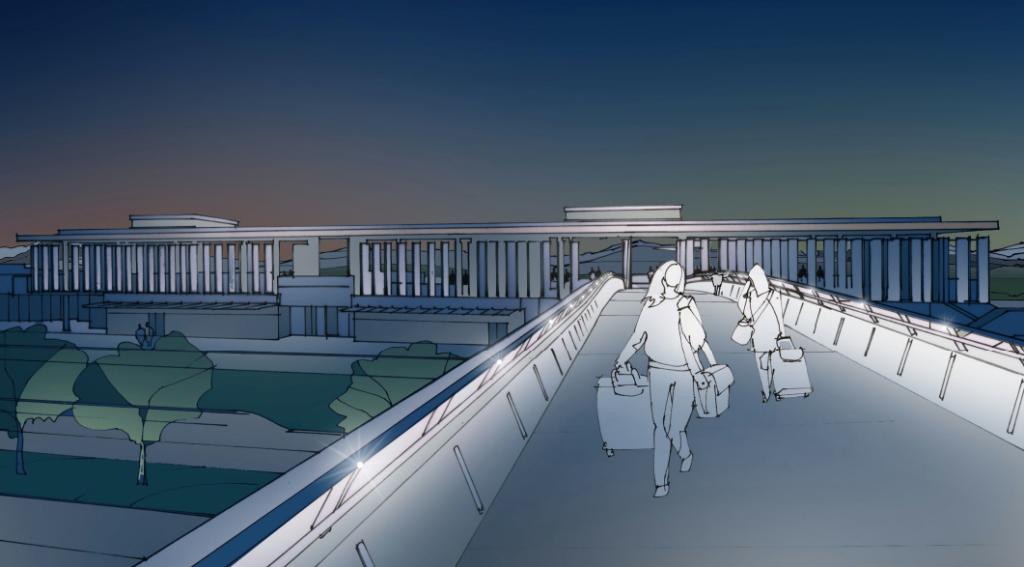
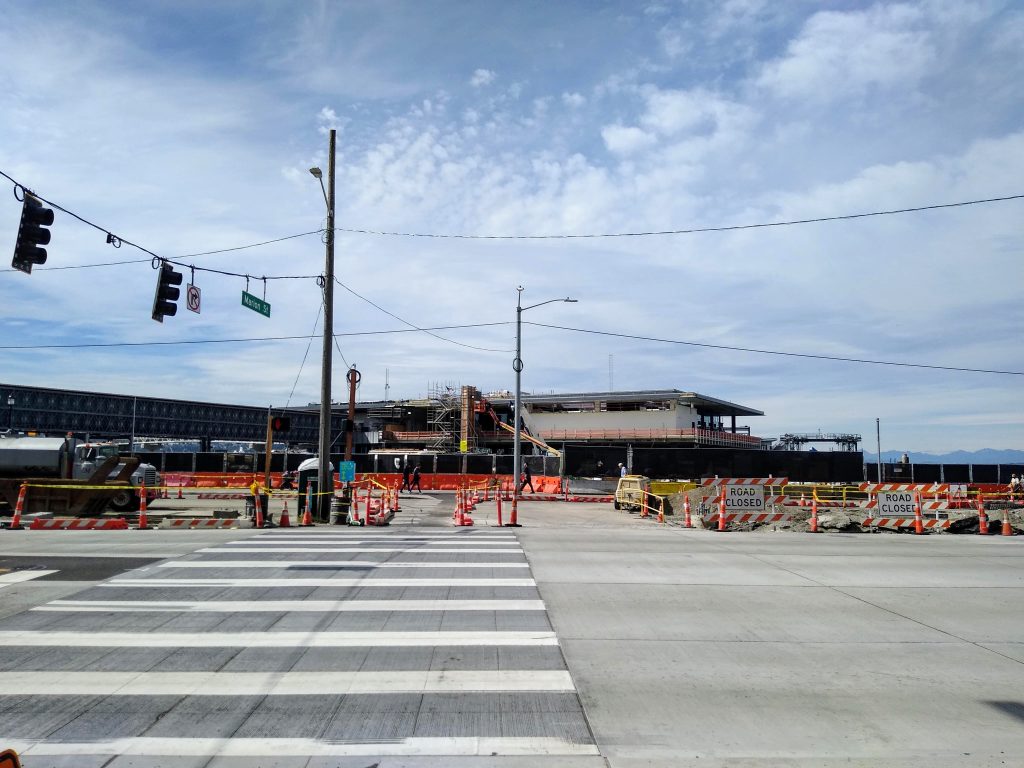
The Marion Street bridge is expected to start construction near the start of 2022 and open in early-to-mid 2023. The rebuild of Colman Dock is expected to continue to late 2023.
Union Street
The Union Street pedestrian bridge, unlike Marion Street, won’t extend over Alaskan Way. It’s less clearly a pedestrian bridge at all, though it will bring users away from the loading docks for the Public Storage building east of Alaskan Way. It might be more accurate to call it a new pathway, replacing the old and awkward stairway that was the only way to get between Alaskan Way and Western Avenue at Union Street. That connection wasn’t accessible, but the new Union Street bridge will include a new elevator, perhaps its biggest benefit. The north end of the waterfront project, particularly the Overlook Walk, is focused around stairways and while there are elevators included in that part of the project as well, any additional boosts for accessibility are going to be huge positives. Also, elevators break so redundancy is important.
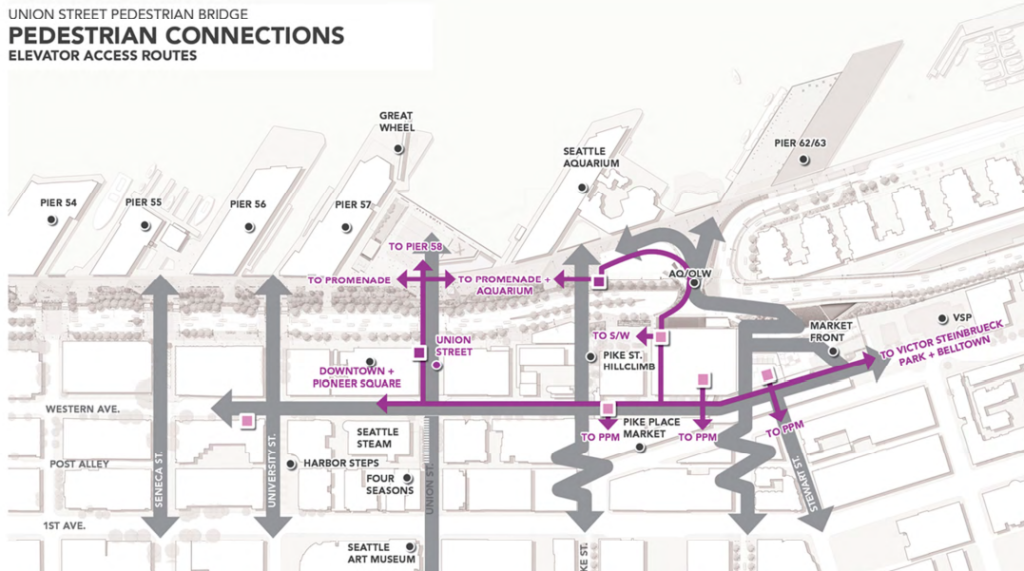
The walkway of the Union Street bridge will be 12 feet wide, and people utilizing the stairway can continue up past Western Avenue via the existing stairway that connects to the Four Seasons hotel on 1st Avenue. Creating this connection should work to stitch back together the pedestrian connections in an area that has long been confusing to visitors.
The walkway of the bridge will be separated from the Public Storage building that it runs alongside by an art screenwall. The artist, Norie Sato, designed the artwork “in response and contrast to the surrounding industrial context along Western Ave” — the screenwall features an image of a wing on top of a background of green ferns. The artist has also designed a sculture of a fern frond to sit at the foot of the staircase that will arch over the heads of people using the stair.
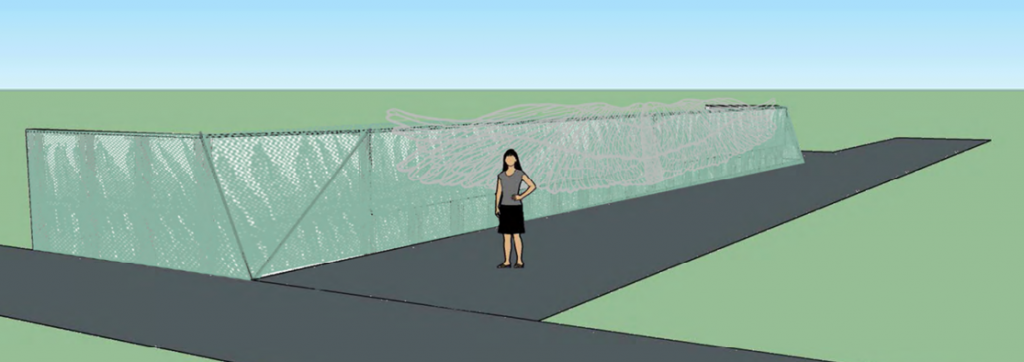
And then there’s The Bench. At the spot where the pedestrian bridge path at the top of the bridge meets Western Avenue, there is to be installed an unusual “lean wall.” Part hostile architecture, part bollard (preventing wayward drivers from turning from Western onto the walkway), part pedestrian diverter (forcing people walking to go to the crosswalks on either side), the bench is ultimately sidewalk level sculpture representing all of those things. Ultimately, this geometric form subbing in for a real bench should not exist, but soon it will.
Construction on the Union Street bridge is currently well underway. The Office of the Waterfront recently shared a photo of current progress, with the forms for the future bridge structure itself being assembled now. It should open in late 2022.
These bridges will likely not become as iconic as the new Overlook Walk directly connecting Pike Place Market to the aquarium. But they should enhance pedestrian mobility and also create new places Seattle visitors and residents alike can pause and take note of the city’s changes.
Ryan Packer has been writing for The Urbanist since 2015, and currently reports full-time as Contributing Editor. Their beats are transportation, land use, public space, traffic safety, and obscure community meetings. Packer has also reported for other regional outlets including BikePortland, Seattle Met, and PubliCola. They live in the Capitol Hill neighborhood of Seattle.

